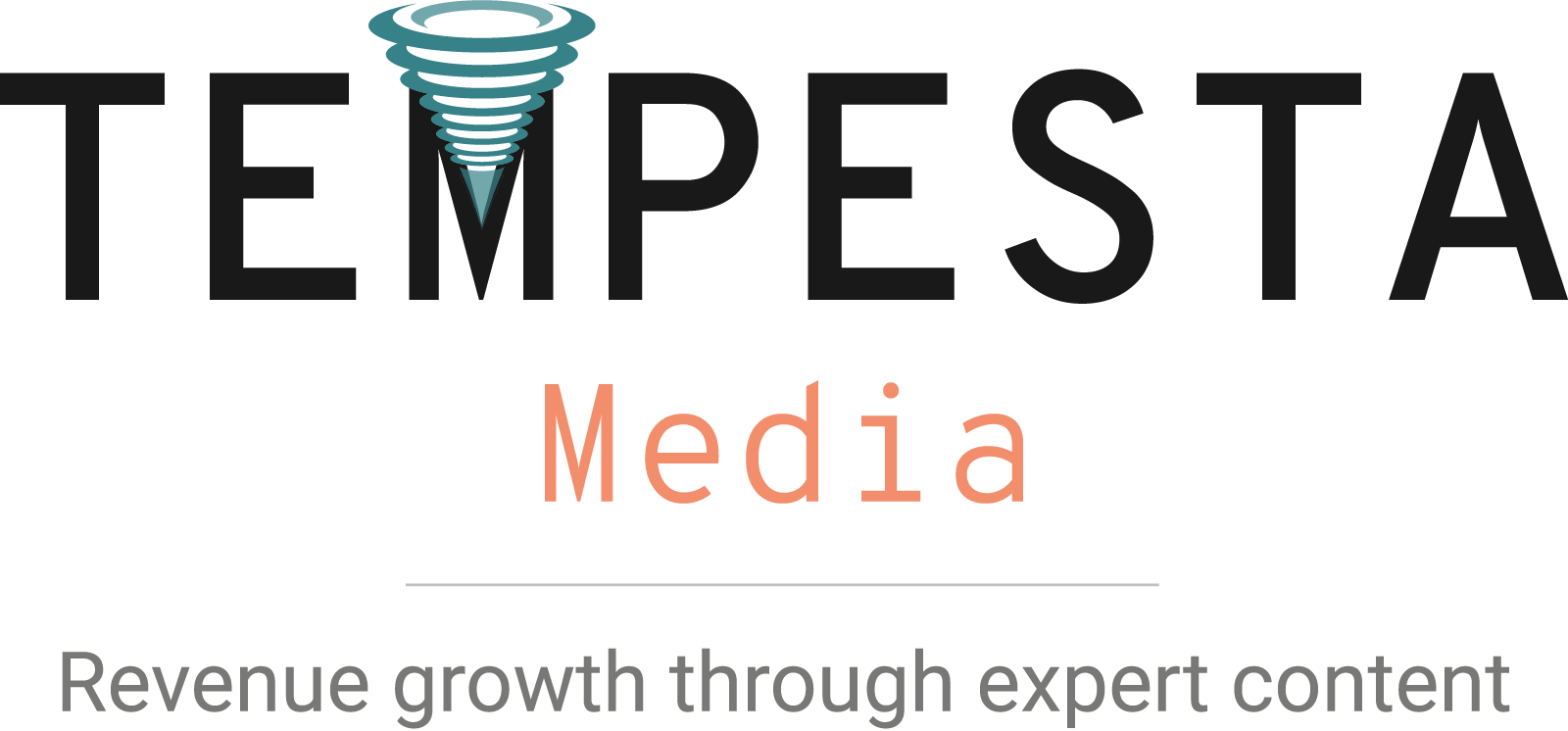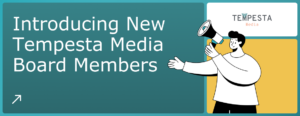Tasked to create a content marketing program and not sure where to start?
These questions are a great starting place for developing your strategy. Answer these questions and you will be well on your way to a content marketing program that justifies some serious ROI.
Why do I need to create a content strategy?
Creating content involves a lot more than just writing something and sending it out.
You have to think about what your company’s mission is, what your business goals are, who your audience is, and what exactly specific types or pieces of content need to achieve. You also have to do all of that within some sort of sequence in which you decide what you want to convey, how to structure it in the right words or visual form, what tools and resources are needed to get the job done, and how to ensure that everything does what it is supposed to do and how it is supposed to do it.
If you create content without a strategy in place, you are more than likely to miss the objective you are trying to hit, or deliver the message you are trying to convey, rendering your content creation initiatives a failure.
Read: Best practices for developing a successful content marketing strategy.
What is the goal/core message of this content?
The goal should answer the question, “What are you trying to accomplish with the content that you create?” For example, are you using the content to drive new leads, or to move people through the marketing funnel?
The core message contains the key concepts and messages about your company that should be present within the content that you create.
Who is the audience of this content?
Is your content targeted at middle managers? Senior execs? External suppliers? Internal employees? The sales team? Perhaps you are targeting casual customers, or maybe even your most steadfast repeat customers.
Depending on your target audience, you need to tailor your content’s tone and level of technicality to those specific target groups and carefully choose the platforms on which you distribute and disseminate your material.
What tone should my content take?
Your content can take on a number of different tones. For example, content that is targeted at senior execs or decision-makers would take on a formal and professional tone, and content targeted at a younger demographic might take on a more persuasive, informal, or even a colorful or humorous tone. Your tone should reflect your brand and play well with your target audience.
For example, Wendy’s is known to use a very playful tone with all its branding, but Microsoft, which has a very large professional user base, often uses a more subtle and formal tone in its marketing and external communications. This contrasts with Apple and Google that often create content which can be called creative, sometimes quirky, and always ingenious – reflective of the images that both companies strive to maintain.
Read: Find a consistent voice for your company’s content.
What themes should the new content focus on?
The best way to pick a theme for your content is to focus on any one of the following:
- what your key competencies are (this content will reiterate your commitment to that competency, such as quality for Toyota),
- what market trends and insights you’ve discovered (this content will position you as an industry thought leader, such as IBM catering to the automated AI bot market),
- problems that plague your specific industry (this content will position you as a creative problem solver, such as any Apple product, or more recently, Microsoft Surface products) or growing and expanding your business (this content will highlight the value, happy customer base, and product/service benefits that you offer, something GE has done for a long time).
What categories should the content fall into?
Content can be broadly categorized into educational or persuasive content. Different people are at different places along the product buying cycle, so to teach those at the top of the funnel who don’t know about your product you need educational material.
Keep in mind, however, that educational material should include less direct selling about your company because too much of it can turn people off. However, for people further along the buying cycle (people who may know about your product but need to be convinced to make a purchase), you can use more persuasive and sales-oriented marketing content to close the deal, and that is the ultimate job of content, to begin with.

What is the state of your existing content?
Assessing the state of existing content is made up of several separate yet related steps. First, you need to gauge how well current content is performing in the channels you are distributing it (which is discussed at the end of this article). Next, evaluate existing content against what your competitors are offering and general industry trends to ensure you are not creating outdated or irrelevant content. If the first two steps look fine, you need to apply best practices (explained below) to your content.
Finally, wherever possible, you need to optimize and automate the content creation process and workflow (also explained below) to ensure that your content is not only refined, polished, published and promoted in the right way but that you are also creating the right amount of content for all of the channels you maintain a presence on.
What are the immediate gaps in our existing content?
To answer this, you need to ask yourself if you are creating content around all your company’s core competencies versus just a few, and whether or not known customer pain points are being addressed within the sources you currently have at your disposal.
One way to do this is to pinpoint the channels that your target customers most frequently use (or that they can most easily be found on), and see what kinds of content, customer interactions and visibility you already have on those platforms.
Compare what you find against what people are saying, and tailor future content around trending topics and any insights you may uncover.
What are our competitors writing about?
This is easy to look up, but it is crucial to not missing the bigger picture. Your competitors may have found a lucrative niche, a message or approach that resonates better with customers that you could learn from.
Notice any trends in the content, for example, are they writing about one vertical more than others? Are they offering specific types of content formats that may be more appealing to their audience? All of this helps determine what to write about and how to convey the message appropriately.
Do we need a style guide, voice guide, or brand guideline?
Absolutely. Even if you don’t have one today, it can be developed slowly over time. Tempesta Media’s Voice Profile technology ensures that the writing style and voice of content created for you matches your company’s brand, and you can use our services to build out your branding and develop internal guidelines for all future content.
The Voice Profile also captures who your target audience is, how formal the writing should be, and all the other nuances our writers need to be aware of in order to create high-quality content for you. This is in addition to editing services, SEO, unlimited revisions, and more.
Who will be creating the content?
Content creation has become such an integral part of business success that there is an entire industry dedicated to it. To create content, you can hire freelancing content creators, in-house copywriters, or partner with a professional content creation company.
You can even write content yourself, but in most cases, it pays for business leaders to focus on running their business and either outsourcing content creation to a third party or hiring a team of in-house writers – but do this only if budgets allow and content requirements can justify and support such a dedicated function.
What timeline should I expect?
Creating content takes both time and money and, depending on the speed at which your industry rotates, you may need more or less content. On average, simply to stay relevant, you should publish at least one piece of relevant, insightful or educational content every week, so you’re looking at a turnaround time of one week per piece of content, but if you are aggressively trying to grow your customer base, you may need more regular posts and sales content going out, as much as two or three times a week.
Be careful, though; many people underestimate the time it takes to write just one quality post. It takes at least 2-3 hours of writing time to compose a 500-word blog, and this is excluding the time it takes to brainstorm topics, time spent editing and revising the content, and of course, adding any graphics and ultimately publishing it.
What types of content should be created?
You can write basic blog posts, have a mini e-book on a topic of your choice, create a podcast, send out a press release if you have had an interesting idea or a relevant event that you could talk to your audience about. If you work in a technical industry, you could even have a white paper written to break down a proposed solution or product, and send it out to the public for feedback, critiques and general opinions.
Who will be responsible for content governance?
Content delivery channels are important gateways and interface points between companies, their customers and the general public, so it is important to manage what content is publicly published, who has access and permission to do so, and that all published content matches your brand guidelines.
Small companies can have a reliable senior team member handle this important function, but larger enterprises should have a dedicated hire who oversees content governance and publishing.
Will there be a content development workflow (from person to person, division to division)?
Most issues with content creation arise because of a lack of clarity about what needs to be done, by whom, how, and by when. When you consider this alongside the fact that it is worth optimizing and automating anything that you do on a regular basis (from sales email funnels to content generation and customer outreach), you should definitely outline a flexible process in which content generation is first ideated/brainstormed, passed through screens and filters for feedback and improvement, and then passed forward for actual composition, editing, review, approval and publishing.
Where can the content be distributed?
You can distribute your content on your company website, on a social blogging site such as Medium, as an answer to a question in a relevant thread on curated information sites such as Quora or Reddit, and as insight or guest pieces on LinkedIn or other publications that are well-known and respected in your industry.
Once you have a piece of content ready, it can also be easily shared on social channels in the form of, say, a Facebook post or a tweet to the blog link, and you can even use email marketing strategies and pay for publication in premium news outlets (think of TechCrunch, HuffPost or Wired as premium outlets for the tech industry) to get the word out.
How will content be promoted?
Two of the most popular ways to promote online content are on social platforms (this content would take the form of, say, Facebook posts that can be promoted on the platform itself using paid promotion or social sharing by a dedicated social media manager handling content promotion), and bidding on Google search terms (using AdWords).
You can use one or both of these channels and promote your content on the channel that gives you the highest traction at the lowest cost.
Read: How to allocate your content marketing budget between creation and promotion.
How will success be measured?
A lot of content is created to increase brand exposure and customer awareness, so if you define success in these terms, then social platforms allow for fairly easy collection of basic stats on shares, likes, mentions, audience reach and overall views.
However, since those things don’t always translate directly into sales or an improved bottom line, you might want to measure success against more technical data such as actual sales (and where they came from), customer engagement levels, and turnaround times for things such as delivery or customer support responses.














